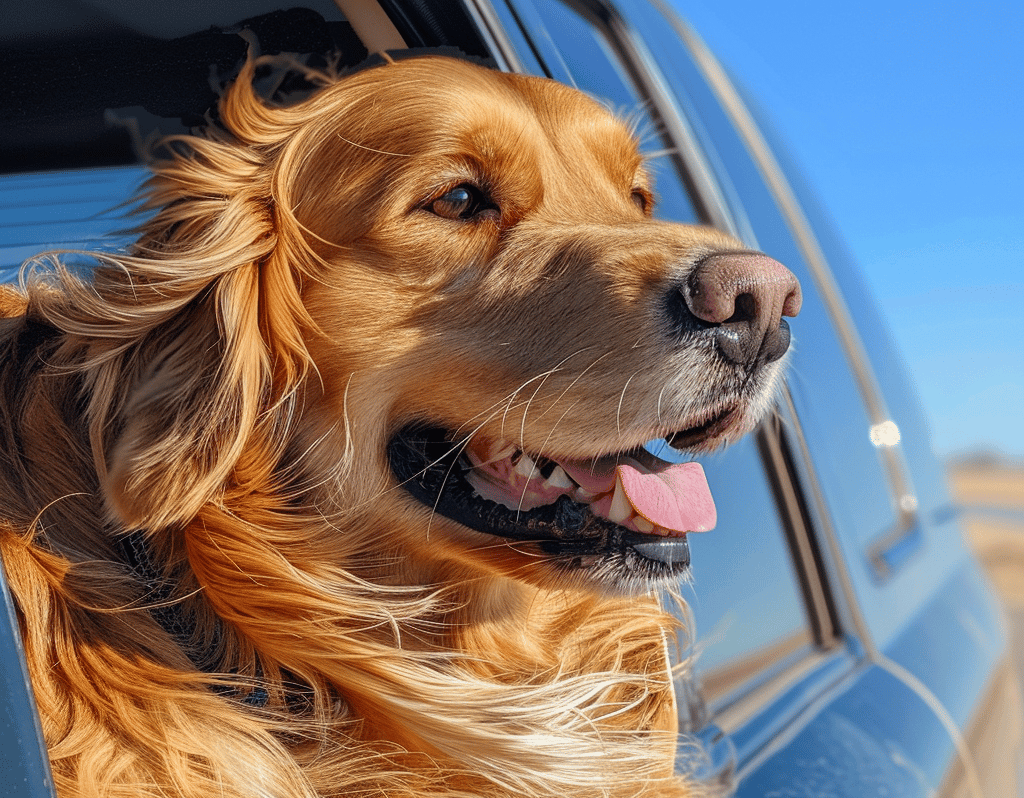Ultimate guide to prepare for a long trip with your Dog
Discover essential tips for preparing your pet for a long road trip. Learn how to ensure their comfort, safety, and well-being for a smooth journey.
Nacho the Vet and Pets lover
8/3/20244 min leer


The Ultimate Guide to Preparing Your Pet for a Long Road Trip
Introduction
Taking your pet on a long road trip can be an enjoyable and enriching experience for both of you. Proper preparation is crucial to ensure your pet's comfort, safety, and overall well-being during the journey. In this guide, we'll cover essential tips and strategies to make your road trip smooth and stress-free.
Key Preparation Steps
1. Visit the Vet:
Before embarking on a long trip, ensure your pet has a clean bill of health. Visit the vet to get up-to-date on vaccinations and obtain a health certificate if you’re crossing state lines. Carry both electronic and paper copies of medical records. This documentation is crucial not only for crossing borders but also in case of emergencies during the trip.
2. Acclimate Your Pet to Car Rides:
Gradually introduce your pet to car rides if they're not used to traveling. Start with short trips and gradually increase the duration. This helps reduce anxiety and makes longer trips more manageable. Positive reinforcement during these trips can help your pet associate car rides with positive experiences.
3. Pack Essentials:
Prepare a checklist of essential items to bring:
Food and Water Bowls: Ensure you have sturdy, non-spill bowls.
Food and Medication: Pack enough food and medication for the trip, plus an extra week's supply in case of delays.
First Aid Kit: Include bandages, antiseptic wipes, tweezers, and any specific medications your pet might need.
Comfort Items: Bring your pet’s favorite toys, bed, or blanket to make them feel at home.
Identification: Ensure your pet has a collar with updated tags and a recent photo.
Travel Crate or Safety Harness: Use a crate or harness to keep your pet secure in the car.
4. Plan Regular Breaks:
Schedule frequent stops every 2-3 hours to let your pet stretch, hydrate, and relieve themselves. This helps prevent restlessness and discomfort. Use these breaks to check on your pet’s well-being and provide them with some exercise.
5. Ensure Proper Restraint:
Use a crash-tested safety harness, crate, or carrier to keep your pet secure in the car. This prevents distractions and keeps your pet safe during sudden stops. A proper restraint system can also prevent injuries in case of an accident.
Safety Tips
1. Never Leave Your Pet Unattended:
Never leave your pet alone in the car, especially in warm weather. Temperatures can rise quickly, posing a serious risk to your pet’s health. Even with windows cracked, the inside of a car can become dangerously hot within minutes.
2. Maintain Ventilation:
Keep the car well-ventilated. Use the air conditioner and avoid letting your pet stick their head out the window to prevent injuries. Proper ventilation also helps prevent motion sickness.
3. Prepare for Emergencies:
Research veterinary clinics along your route and at your destination. Having a plan in place ensures you can get help quickly if needed. Include a list of emergency contacts and pet-friendly hotels in your travel plan.
4. Keep Safe Distance from Wildlife:
When traveling through areas with wildlife, maintain a safe distance to prevent any encounters that could harm your pet. Wildlife can be unpredictable and potentially dangerous.
5. Practice Social Distancing and Follow Health Guidelines:
Follow health guidelines at gas stations, campsites, and public areas to ensure your and your pet's safety. Keep hand sanitizer and disinfectant wipes handy.
Additional Tips for a Smooth Trip
1. Hydration is Key:
Ensure your pet stays hydrated throughout the journey. Offer water at every stop and consider bringing a portable water bottle with an attached bowl.
2. Feeding Schedule:
Stick to your pet’s regular feeding schedule to avoid digestive issues. Feed them a few hours before the trip to prevent car sickness. Avoid feeding right before departure to reduce the risk of nausea.
3. Comfort and Entertainment:
Keep your pet entertained with toys and chews. Bringing their favorite items can reduce anxiety and keep them occupied. Puzzle toys can provide mental stimulation and prevent boredom.
4. Motion Sickness Remedies:
If your pet is prone to motion sickness, consult your vet for suitable remedies. Ginger can help alleviate nausea and is available in pet-friendly chews.
5. Bedding and Blankets:
Provide familiar bedding and blankets to create a sense of security and comfort. This can help your pet relax during the trip.
Personal Experience and Tips
As a veterinarian and pet parent, I know the importance of proper preparation for a road trip with pets. When I took my dog Tokyo on a long drive, I made sure to pack all essentials, including his favorite toys and a bed to make him feel at home. We took regular breaks, and I kept him hydrated and fed on a schedule similar to his routine at home. Using a safety harness kept him secure and calm, making the journey enjoyable for both of us.
Tips for Pet Parents:
Consult Your Vet: Ensure your pet is healthy and has all necessary vaccinations.
Pack Smart: Bring enough food, water, and medication.
Keep Them Comfortable: Familiar items from home can help reduce anxiety.
Stay Safe: Use proper restraints and never leave your pet alone in the car.
Conclusion
With the right preparation, a road trip with your pet can be a wonderful experience. Plan ahead, pack essentials, and follow safety guidelines to ensure a smooth and enjoyable journey for you and your furry friend.
Takeaways
Vet Visit: Ensure your pet's health and vaccinations are up-to-date.
Pack Essentials: Include food, water, medication, and comfort items.
Plan Breaks: Schedule regular stops for exercise and hydration.
Ensure Safety: Use proper restraints and never leave your pet unattended.
Stay Prepared: Have emergency contacts and veterinary clinics planned along the route.
Go-To Bites ®
Helping Pet Parents
Menu
© 2024. Go-To Bites ® All rights reserved.
Blog
